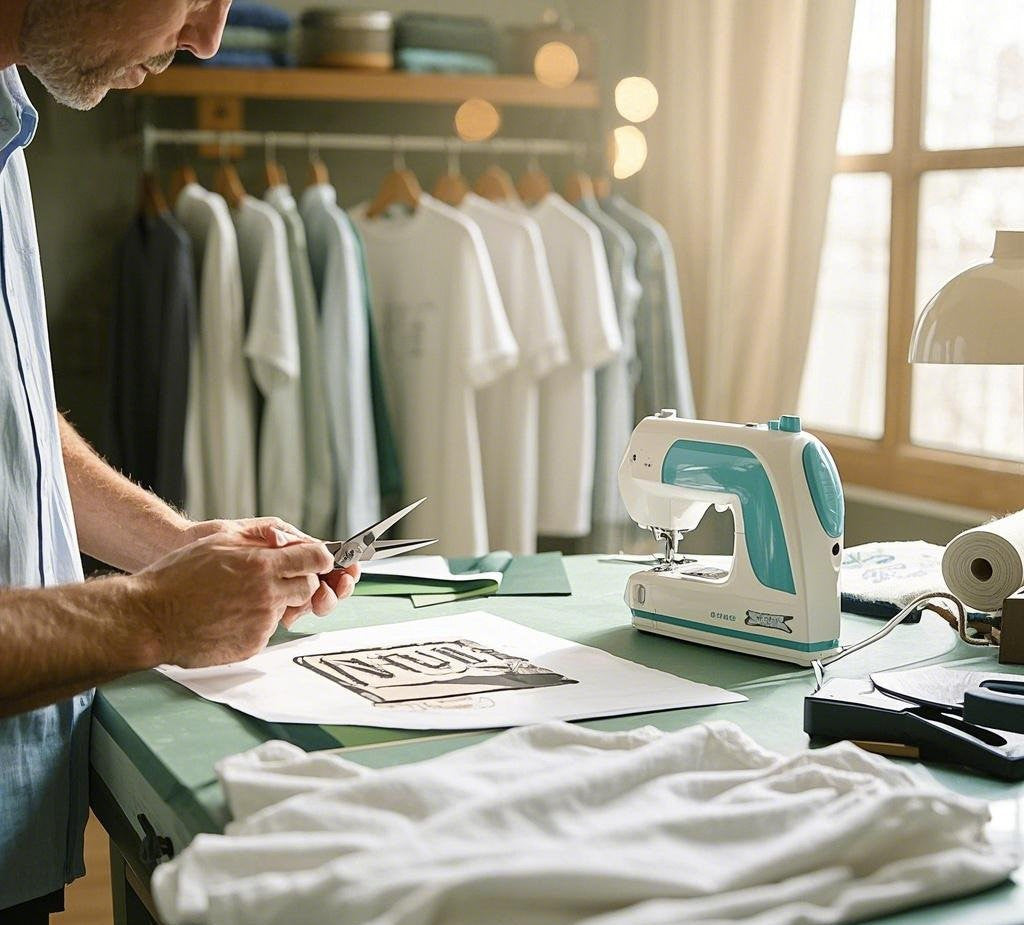
HEAT TRANSFER VINYL SECRETS: MASTERING PROMOTIONAL APPAREL CUSTOMIZATION
HEAT TRANSFER VINYL: THE GO-TO SOLUTION FOR PROMOTIONAL APPAREL
In the world of promotional merchandise, standing out is key. Businesses and brands need eye-catching, durable, and cost-effective ways to showcase their logos, slogans, and designs on apparel like t-shirts, hoodies, and hats. Heat transfer vinyl (HTV) has emerged as a preferred technique, offering vibrant, high-quality prints with flexibility and efficiency. But what makes HTV such a game-changer for promotional products? Let’s explore how it works, its advantages, and best practices for optimal results.
WHAT IS HEAT TRANSFER VINYL?
Heat transfer vinyl, commonly referred to as HTV, is a material used to transfer designs onto fabric using heat and pressure. The process involves cutting a design from vinyl sheets, then using a heat press to permanently bond it to the garment. HTV is widely valued for its ability to produce intricate designs, sharp lettering, and multi-color applications without requiring extensive setup.
Unlike screen printing or embroidery, HTV is an adaptable and cost-efficient solution, ideal for customized promotional products, small production runs, and detailed artwork.
HOW DOES HEAT TRANSFER VINYL WORK?
The HTV application process is simple yet requires precision for professional results:
- Design Creation: A digital design is created using graphic design software, featuring logos, slogans, or event-specific artwork.
- Vinyl Cutting: The design is cut from a sheet of HTV using a cutting machine. Excess vinyl is then removed (weeding) to reveal the final image.
- Garment Preparation: The fabric is laid flat on a heat press, ensuring it is smooth and wrinkle-free.
- Heat Application: The vinyl is positioned on the fabric, and a heat press applies the correct temperature (typically 300°F to 350°F) and pressure for 10-30 seconds.
- Peeling & Finalizing: The protective carrier sheet is removed, revealing the completed design. Some applications may require a second press for enhanced durability.
POPULAR HTV APPLICATIONS FOR PROMOTIONAL PRODUCTS
HTV comes in various finishes, offering creative possibilities for promotional items:
- Standard HTV: Ideal for solid-color logos and branding on t-shirts and uniforms.
- Glitter & Metallic HTV: Adds a shimmering effect, perfect for event merchandise.
- Flocked HTV: Provides a soft, velvety texture for premium apparel.
- Holographic & Reflective HTV: Creates bold, high-visibility designs.
- Stretch HTV: Designed for performance wear, ensuring flexibility and durability.
WHY BUSINESSES CHOOSE HEAT TRANSFER VINYL
HTV is a popular choice in promotional branding for several reasons:
✅ Versatility: Works on cotton, polyester, blends, and various fabric types.
✅ Cost-Effective for Small Orders: Unlike screen printing, HTV requires minimal setup costs.
✅ Sharp & Vibrant Graphics: Produces crisp, long-lasting designs.
✅ Quick Turnaround: Ideal for last-minute promotional needs.
✅ Customization: Personalizes apparel with names, numbers, and one-off designs.
✅ Durability: Withstands washing and daily wear when properly applied.
LIMITATIONS TO CONSIDER
Despite its advantages, HTV has some limitations:
❌ Layering Complexity: Multi-color designs may require additional layering, increasing production time.
❌ Not Ideal for Bulk Orders: For large-scale production, screen printing may be more cost-effective.
❌ Fabric Compatibility: Some HTV types may not adhere well to high-stretch or heavily textured fabrics.
REAL-WORLD EXAMPLE: HTV IN ACTION
A small coffee chain wanted custom-branded aprons and t-shirts for their baristas. With a tight budget and the need for a quick turnaround, they chose HTV to create high-quality, heat-pressed logos on cotton apparel. The result? Durable, professional-looking uniforms that reinforced their brand identity—at a fraction of the cost of embroidery or screen printing.
BEST PRACTICES FOR SUCCESSFUL HTV APPLICATION
✔ Choose the Right HTV Type: Match the vinyl to the fabric and design requirements.
✔ Test Before Production: Conduct a trial application to ensure correct heat and pressure settings.
✔ Use Quality Materials: Invest in premium HTV sheets and reliable heat presses.
✔ Follow Care Instructions: Wash garments inside out and avoid high-heat drying to preserve designs.
THE FUTURE OF HEAT TRANSFER VINYL IN PROMOTIONAL PRODUCTS
As technology advances, HTV continues to evolve with improved materials, eco-friendly options, and stronger adhesives. The growing demand for sustainable and personalized promotional apparel ensures that HTV remains a leading choice for businesses looking to make a lasting impression.
CONCLUSION
Heat transfer vinyl is revolutionizing promotional branding, offering an easy, affordable, and high-quality solution for customized apparel. Whether for a small business, event promotion, or corporate branding, HTV provides unmatched flexibility and stunning results. By understanding the process and following best practices, companies can leverage HTV to create standout merchandise that leaves a lasting impact.
Ready to explore heat transfer vinyl for your next promotional project? Start designing today!

